
Brownsea Island - approaching the island from the north - these sealanes are where my ancestors, the Hayes family of Poole, all fishermen, took their little boats to set lines for shellfish...
Poole Harbour is one of my favourite places and when I was a child on holiday there in the early 1960s, we would always go for a boat trip from Poole Quay around Brownsea, the biggest island in the middle of the harbour.
In those days you couldn’t land on the island but in 1962 it was taken over by the National Trust and it is now open to the public between March and October.
It is a wonderful place and I would recommend it to anyone passing that way in East Dorset. The landing fee is about £5 for an adult, but National Trust members can land on the island free.
Note, though, that the island’s famous red squirrels are unlikely to be seen in the height of summer as they are very timid.

Although I didn't see red squirrels on my trip to Brownsea, I felt I must show a picture anyway - this was taken on Brownsea by SteveJM
Brownsea – originally called Branksey, meaning Brank’s island – is a 500-acre island of pinewood and heathland and salt-marsh and a habitat for wildlife.
Looking back in time, Brownsea was a settlement as far back as 500BC and archaeologists have found black pottery made from local clay.
Monks built a chapel on the island in the ninth century AD but this was destroyed by the Viking invaders under King Cnut in 1015.
In the 1530s King Henry VIII snatched control of the island from Cerne Abbey following the Dissolution of the Monasteries. He used it as the base for a fort to guard the strategic approaches to the South Coast. Luckily 40 years later the Spanish Armada was beaten off before it got anywhere near Poole Harbour.
From the 1650s Brownsea was owned by a succession of MPS. Then in 1852 Col William Waugh thought he had found china clay when white mud stuck to his wife’s walking stick. So he bought the island and set up a pottery employing 200 local people. Alas the clay was of poor quality and he fled to Spain to escape creditors.
From the 1870s for the next half-century Brownsea’s successive owners developed the island for agriculture and the castle itself became a magnet for the rich and famous.
The island went back to wild heathland after 1927, when the eccentric Mary Bonham-Christie bought the island and banned fishing or any exploitation of animals. The estate workers who had farmed the land all returned to the mainland.
It was on Mrs Bonham-Christie’s death in 1961, aged 96, that the Treasury accepted the island in lieu of death duties and the National Trust managed to raise £100,000 to enable it to take over the running of the island.
The John Lewis Partnership was a huge benefactor and after repairing Brownsea Castle, now rents it from the National Trust as a hotel for employees.

Brownsea Island - Brownsea Castle was rebuilt on a grand scale by owner Sir Humphrey Sturt, MP, from around 1765
I have a particular soft spot for Brownsea as my 4-great-grandfather John Read, a fisherman born in 1777, was recorded as living on Brownsea at the time of the 1841 census.
Here is my pictorial record of a trip to Brownsea in August 2009.

Brownsea Island - between 1852 and 1857 Col William Waugh, an ex-Indian Army officer, added a gatehouse to the castle

Brownsea Island - the neo-Gothic church of St Mary the Virgin was built by Col William Waugh and consecrated in October 1854

Brownsea Island - the neo-Gothic church of St Mary the Virgin was built by Col William Waugh and consecrated in October 1854

Brownsea Island - the neo-Gothic church of St Mary the Virgin was built by Col William Waugh and consecrated in October 1854

Brownsea Island - the tomb of Charles van Raalte in the church of St Mary the Virgin. Charles and his wife Florence owned Brownsea Castle from 1901, during a time of great prosperity and grandeur. He died in 1908 but Florence carried on until she sold up in 1925

Brownsea Island - statue to Robert Baden-Powell, hero of Mafeking, who set up the first Scout camp on the island in August 1907

Brownsea Island - a pleasure boat leaving the visitors' pier to continue its trip around Poole Harbour

Brownsea Island - view of the south-west end with purple heather (probably a bit late in the season for rhododendrons, which grow like a weed on Brownsea)
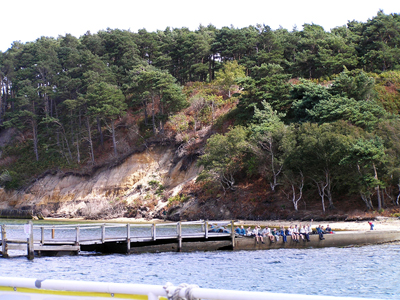
Brownsea Island - visitors sitting on the pottery quay at the west end of the island. Col William Waugh hoped to make money out of clay found on Brownsea but it ruined him, as it was of poor quality and of use only for drainage pipes. The beach in this area is littered with broken red-brown pottery.


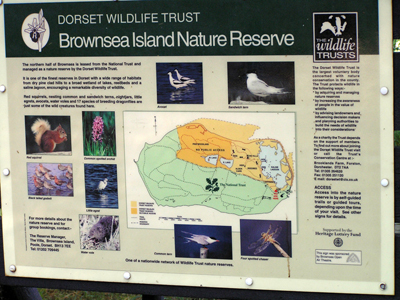
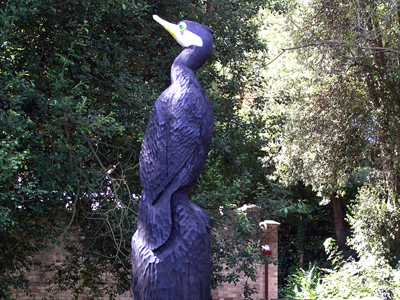










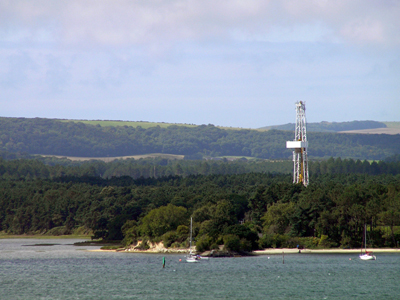









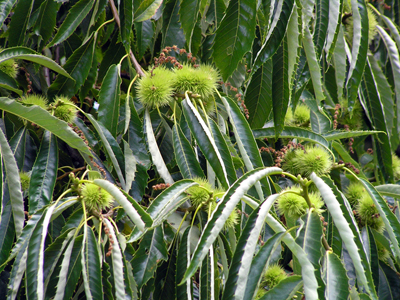

















Thanks for featuring my photo of a red squirrel. I agree with you, Brownsea is a wonderful place!
Thank you for letting me use your picture! I’ve never seen a red squirrel in the flesh.
I really love all your Dorset wildlife pictures on Flickr and I have just started following you on Twitter, so maybe we’ll speak again…
Best wishes
P
Any wild horses on this island
Afraid not, just red squirrels 🙂